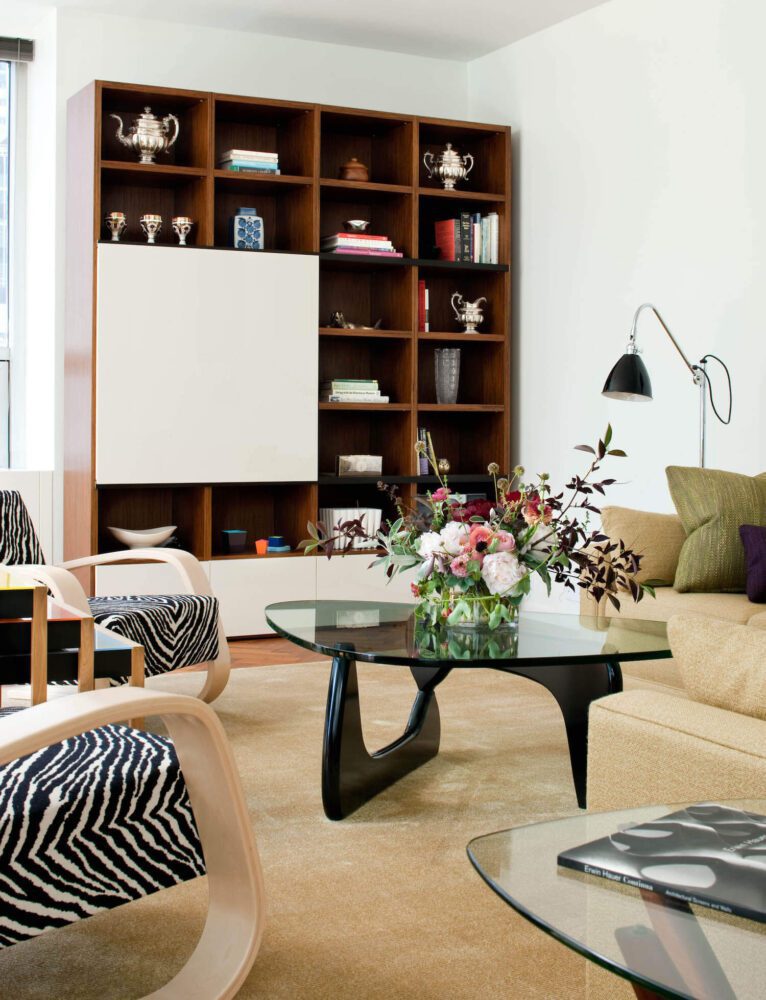Ask a French scholar what a banquette is, and you’ll get a simple answer: A banquette is just a bench. Ask an interior designer what a banquette is, and you’ll hear something a little different: A banquette is a clever way to dress up a dining nook.
Of course, both are correct. The French word banquette literally means bench. And it’s often used to describe an upholstered bench that lines a wall or corner. But in interior design, a banquette is so much more than a bench. It’s a clever way to sneak an eat-in space where one otherwise won’t fit. It’s a charming way to spruce up a breakfast nook, making it cozier and more intimate. And it’s a creative way to transform a dining room, giving you a luxurious escape that feels more like a restaurant than a room in your home.
Banquettes first came to fashion during the Renaissance. French aristocrats lined their banquet tables with the space-efficient benches, softening them with upholstered cushions. Centuries later, renowned decorator Elsie de Wolfe made banquettes a favorite among Americans. Banquettes dressed up early-1900s libraries, parlors, and ballrooms—though they rarely appeared in kitchens, like they often do today.
It didn’t take long for banquettes to make another comeback. In 1979, the New York Times called the banquette “a new classic”—a reputation it still holds to this day. In dining nooks everywhere, designers continue to abandon standard seating in favor of built-in banquettes. Sometimes, the choice is a practical one, made for the sake of space efficiency. Other times, it’s a way to switch things up and keep a home’s design dynamic.
But in every case, the choice is fun, cozy, and transformative: It takes what would be an ordinary dining nook—and makes it into an inviting place where you can’t wait to sit down.

A Craftsman Banquette With Eye-Catching Upholstery
This banquette from Dane Austin Design pays homage to the Arts and Crafts movement—layering print, color, and texture to create a dining nook that’s bold, but true to the home it lives in. “We drew color inspiration from the William-Morris-inspired window treatment fabric. It’s a pattern that is associated with the Arts and Crafts movement,” Dane Austin, luxury residential interior designer at Dane Austin Design, says. “The architectural style of the home—Craftsman style—is inspired by the Arts and Crafts movement as well, making for a cohesive design paying homage to the home’s history and architecture.”
A Sleek Banquette With a Statement Wall
The wall behind this Beautiful Habitat Interior Design banquette isn’t just statement-making. It’s slatted. And when you look at it, you can actually peer through it into the dining room that lies behind the wall. “The design of this home is very open, but sometimes we also need walls, boundaries, and anchoring points,” Tenille Wood, principal interior designer at Beautiful Habitat Interior Design, says. “The wood slat wall creates a boundary, while still allowing openness and light through.”
Because this dining nook is so close to the dining room, Wood knew she wanted to build a banquette. “Having a dining room with a table and chairs right next to the kitchen table and chairs is unnecessary and just weird,” she says. “The banquette is a perfect fit in this more casual of the two eating spaces.”

A Cozy Coastal Banquette
This BANDD/DESIGN banquette is a marvel of space efficiency. The sprawling banquette expanded the home’s dining nook—while sneaking in extra storage space, too. “The existing breakfast nook area was a bit small when a table was centered in it, so we designed this banquette to provide adequate seating,” Sara Malek Barney, founder and principal designer at BANDD/DESIGN, says. “I love how it fully integrates into the wall. [Plus,] there is extra storage hidden under the bench seats!”

A Sleek, Upholstery-Free Banquette
Our favorite thing about this Habitude Interiors banquette? It isn’t upholstered. “The natural beauty of the walnut makes this piece a showstopper,” Jennifer Sledge Felts, owner and principal designer of Habitude Interiors, says. “Once we saw how beautiful the walnut was, we didn’t want to cover it up with an upholstered cushion seat and/or back.”
Instead, she softened the banquette with a few throw pillows—and focused on getting its shape just right. “The addition of a few throw pillows adds the softness to break up the wood, but allows the wood to shine through,” Sledge Felts says. “Knowing that we were likely only using throw pillows on this banquette, keeping the design sleek but still comfortable was key. Getting the slant of the back correct was important!”

A Cozy Banquette That Takes You From Room to Room
This Shoshin banquette softens the transition between two major rooms: the kitchen and the family room. “This kitchen opens up to a small family room, so we needed to keep the overall footprint of the eat-in area as compact as possible,” Alexis Smith, owner and principal designer at Shoshin, says. “I like that it created a cozy spot for weeknight meals, and the upholstered element also created a natural transition into the adjacent family room.”

A Leather Banquette That Packs a Punch
The art may be the first thing that catches your eye in this dining nook. But it’s the warm leather upholstery that makes this IDF Studio banquette truly special. “Our favorite part of the banquette is definitely the upholstery. The leather look is great for heavy use, and it’s a material that’s only going to get better with age,” Kassin Adelman, founder and CEO of IDF Studio, says. “We loved designing the tab detail with the D-rings that adhere the back cushions to the wall. It’s these details—and the wall-mount application itself—that make the banquette feel custom and fresh, not too bulky or heavy.”







